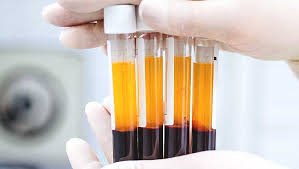What is Platelet‑Rich Plasma (PRP)?
Platelet‑Rich Plasma (PRP), also known as autologous conditioned plasma, is derived from your own blood. It is plasma concentrated 3–5× above normal platelet levels, containing growth factors and cytokines that promote tissue repair and regeneration. Preparation typically involves drawing blood, centrifuging it to separate red cells, then isolating the platelet‑rich layer for use.
Can PRP help you get pregnant?
PRP is being explored in reproductive medicine as an adjunct to fertility treatments. It is applied in two main areas: endometrial rejuvenation (to thicken the uterine lining and improve receptivity) and ovarian rejuvenation (to enhance ovarian function and possibly egg quality/quantity). Early studies show modest increases in pregnancy rates, especially for women with thin lining or diminished ovarian reserve.
What is endometrial rejuvenation?
Endometrial rejuvenation involves injecting PRP into the uterine cavity (via catheter), usually 3–5 mL around days 7–11 of a fertility cycle. This aims to promote endometrial cell proliferation and growth factor signalling to reach optimal thickness (≥ 7 mm, ideally 9–12 mm), improving implantation chances in IVF or IUI.
What is ovarian rejuvenation?
Ovarian rejuvenation entails injecting PRP directly into the ovaries using ultrasound guidance and a fine needle. The goal is to stimulate dormant follicles or improve egg quality, especially in women with low AMH, high FSH, or early ovarian failure. Results may include restored cycles, better hormonal markers, and occasional spontaneous or IVF‑related pregnancies.
How does PRP work?
PRP releases growth factors—such as PDGF, VEGF, FGF, IGF, and TGF‑β—that support stem‑cell activation, angiogenesis, tissue remodelling, and reduction of fibrosis or inflammation. In the ovary, this may invigorate local microenvironment and follicles. In the uterus, it may drive cell proliferation to thicken and enhance receptivity of the endometrium.
How successful is PRP?
A recent meta‑analysis found statistically significant improvements in retrieved oocytes (mean difference ~0.8) and embryos (~0.9), with live birth rates around 11% and biochemical pregnancy ~18% among treated women with diminished ovarian reserve. Individual success stories (e.g. Melbourne case) report pregnancy after one IVF cycle following ovarian PRP. However, overall evidence is still limited to observational and pilot studies; no large randomized trials yet.
How long does PRP last?
Effects on the ovaries may begin within 10–15 days and last approximately 3 months; endometrial improvement may appear within 3–5 days and similarly persist for around three months. Clinics sometimes repeat PRP treatments 2–3 times if needed.
Is PRP painful?
Endometrial infusion is generally pain‑free, though mild period‑like cramps may occur. Ovarian PRP is done under sedation or local anaesthesia, making discomfort minimal. Full recovery is usually immediate, and most resume daily activities within hours.
Where can I get PRP?
PRP fertility treatments are offered at specialized IVF clinics worldwide—particularly in Europe (e.g. Greece, North Cyprus), the U.S., Australia, and other countries with advanced reproductive medicine centres.
Is PRP available in any country?
While not yet standard everywhere, experimental PRP fertility procedures are available in many countries where IVF is practiced—though regulatory and insurance coverage differs. Many clinics emphasize its experimental status, and protocols vary by region.
Should I do PRP in the clinic where I’m being treated?
It’s generally advisable to receive PRP at the same trusted fertility clinic managing your IVF or fertility care, since accurate timing, preparation, and integration into your cycle (e.g. pre‑IVF stimulation or embryo transfer) is critical. Coordination ensures appropriate follow‑up and monitoring.
Where can I get more information on PRP?
Ivf-travel.com: Search for meta‑analyses.
PRP is a promising experimental regenerative therapy offering potential benefits in endometrial and ovarian rejuvenation. It may help enhance implantation outcomes and boost ovarian function in women with infertility challenges, particularly those unwilling to use donor eggs. While early results are encouraging, large‑scale clinical trials remain limited. Effects are typically short‑term (about 3 months), and treatment is generally well tolerated with minimal pain. If you’re considering PRP, consult a reputable fertility specialist closely involved in your ongoing treatment.






